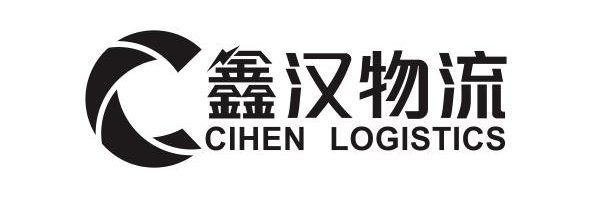Shipping goods from China to Curaçao requires strategic expertise to address the unique challenges of Caribbean logistics, customs procedures, and regional trade dynamics. As a constituent country of the Kingdom of the Netherlands, Curaçao combines Dutch customs regulations with Caribbean economic dynamics, creating distinct considerations for importers. Whether exporting machinery, electronics, or consumer goods, partnering with a specialized freight forwarder ensures compliance, cost efficiency, and timely delivery. This guide explores key considerations, from shipping methods and customs requirements to risk mitigation strategies.
- Shipping Methods: Ocean, Air, and Multimodal Options
Curaçao’s geographic position in the southern Caribbean necessitates careful route planning:
- Ocean Freight:
The primary mode for 95% of imports, ocean routes typically transit via the Panama Canal to Curaçao’s Port of Willemstad. Transit times range from 25–40 days for full container load (FCL) or less-than-container load (LCL) shipments. Willemstad, a major free port, handles bulk cargo and serves as a regional distribution hub. - Air Freight:
Ideal for high-value or time-sensitive goods (e.g., pharmaceuticals, electronics), air routes connect Chinese hubs like Shanghai to Curaçao’s Hato International Airport (CUR). Transit times average 5–8 days, but costs are significantly higher than ocean freight. - Multimodal Transport:
Combines ocean freight with road transport. Cargo arriving at Willemstad moves inland via Route 25 to key cities like Willemstad or Bonaire. Limited rail infrastructure necessitates reliance on trucking.
Pro Tip: Schedule shipments to avoid Willemstad’s peak congestion (April–June) or opt for air freight for urgent needs.
- Customs Compliance and Documentation
Curaçao follows Dutch customs regulations as part of the Kingdom’s customs territory, requiring adherence to EU-like procedures:
- Commercial Invoice: Detailed item descriptions, value, and harmonized system (HS) codes.
- Bill of Lading (B/L): Specifies cargo details and consignee information.
- Certificate of Origin: Confirms manufacturing country; may benefit from China-Netherlands FTA tariffs if applicable.
- Import Declaration: Filed electronically via the Netherlands’ Belastingdienst (Tax Authority).
While Curaçao is not part of the EU, it aligns with Dutch tariff schedules. Average import duties range from 0–10%, varying by HS code. A freight forwarder manages Belastingdienst filings and ensures compliance with Dutch customs rules.
- Challenges and Solutions for Curaçao Shipments
A. Port Congestion and Infrastructure
Willemstad’s free port handles significant regional trade, leading to periodic congestion. Mitigate risks by:
- Using bonded warehouses near ports for faster clearance.
- Partnering with forwarders experienced in transshipment via San Juan (Puerto Rico) or Freeport (Bahamas). B. Weather Vulnerabilities
Hurricane season (June–November) poses risks to shipping schedules. Build buffer time or prioritize air freight during peak storm months. C. Currency and Payment Risks
The Netherlands Antillean guilder (ANG) is the official currency, but USD is widely accepted. Use USD-based contracts to stabilize costs.
- Key Services Offered by Freight Forwarders
A trusted forwarder provides tailored solutions for Curaçao-bound shipments:
- Customs Brokerage: Manages Belastingdienst e-filing, duty optimization, and HS code classification.
- Door-to-Door Logistics: Coordinates port pickup, inland trucking, and last-mile delivery to Willemstad or Bonaire.
- Track-and-Trace Systems: Monitors shipments via Belastingdienst updates and GPS integration.
- Risk Mitigation: Offers cargo insurance and contingency plans for port strikes or weather disruptions.
- Cost Considerations
Shipping costs vary by cargo type, route, and services:
- Freight Forwarding Fees: Typically 5–12% of total shipment value.
- Ocean Freight Charges: Include terminal fees (THC) and fuel surcharges.
- Duties and Taxes: Average 5–15% of CIF (Cost, Insurance, Freight) value, influenced by HS codes.
- Inland Transportation: Costs range from $1,000–$3,000 for trucking from Willemstad to inland destinations.
Request a detailed quote to compare options and avoid hidden fees.
- Frequently Asked Questions
Q: How do I expedite customs clearance in Curaçao?
A: Pre-register products with Belastingdienst, use AEO (Authorized Economic Operator) status, and ensure accurate HS code classification.
Q: What’s the best port for importing goods to Curaçao?
A: Port of Willemstad is ideal for bulk shipments, with bonded warehousing options for faster clearance.
Q: Are there restrictions on used equipment imports?
A: Yes, used machinery often requires inspections and certifications. Confirm eligibility with your forwarder.
Conclusion
Shipping from China to Curaçao demands expertise in Dutch customs procedures, regional weather patterns, and port logistics. By partnering with a freight forwarder, businesses gain access to streamlined clearance, cost-efficient routing, and risk management strategies. Whether importing industrial components or consumer goods, professional logistics support ensures timely, compliant deliveries to Curaçao’s growing markets.
Optimize Your China-Curaçao Supply Chain
Focus on your core operations while experts handle the intricacies of cross-border shipping—from Belastingdienst filings to last-mile delivery. A trusted freight forwarder bridges the gap between global trade and Caribbean compliance.
